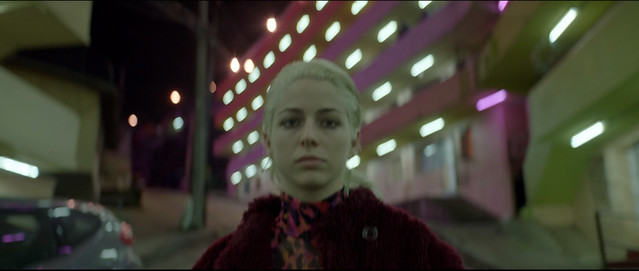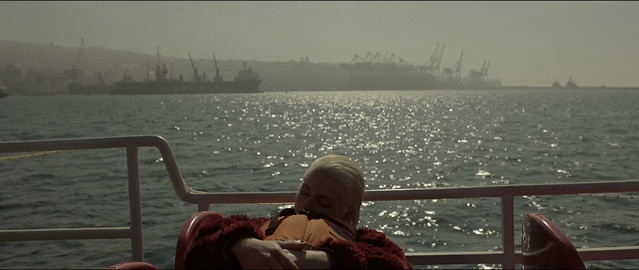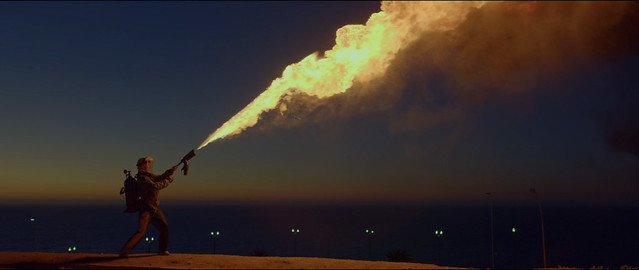 Autism is not a dirty word anymore. We all know someone in our lives who are deemed autistic. But even though our society may have gotten better at treating people on the spectrum over the years (relatively speaking of course), our understanding of how a person with autism views the world has been rudimentary at best. It wasn't until 2013, when, a then 13-year old autistic Japanese boy named Higashida Naoki wrote a memoir called The Reason I Jump and British author David Mitchell (Cloud Atlas) translated the book with his wife into English, the whole world, for the very first time, had a chance to get a glimpse of how people on the spectrum perceive the world. The book has been a revelation for many, and helped thousands of anxious parents who for years had to cope with having autistic children without much guidance on the subject. Then again, it was those parents - their persistence, dedication and unconditional love that made this breakthrough possible; for it was Naoki's mother who devised a handmade Japanese alphabet grid so her non-verbal son could finally express himself in words and eventually write the book. I read his memoir a long while ago and it was truly an eye-opening experience.
Autism is not a dirty word anymore. We all know someone in our lives who are deemed autistic. But even though our society may have gotten better at treating people on the spectrum over the years (relatively speaking of course), our understanding of how a person with autism views the world has been rudimentary at best. It wasn't until 2013, when, a then 13-year old autistic Japanese boy named Higashida Naoki wrote a memoir called The Reason I Jump and British author David Mitchell (Cloud Atlas) translated the book with his wife into English, the whole world, for the very first time, had a chance to get a glimpse of how people on the spectrum perceive the world. The book has been a revelation for many, and helped thousands of anxious parents who for years had to cope with having autistic children without much guidance on the subject. Then again, it was those parents - their persistence, dedication and unconditional love that made this breakthrough possible; for it was Naoki's mother who devised a handmade Japanese alphabet grid so her non-verbal son could finally express himself in words and eventually write the book. I read his memoir a long while ago and it was truly an eye-opening experience.
The Reason I Jump is loosely adapted by documentarian Jerry Rothwell. With jumbled home movie footage and recent events with the help of immaculate sound design by Nick Ryan, the film succeeds in presenting the world of autism as an audiovisual sensory experience. As Naoki explains in his words (in voice over narration by Jordan O'Donegan)that he, as an autistic person, experiences time differently - not in linear fashion, but in spurts: what he experienced when he was little can be present right next to what happened two minutes ago- with all the emotions he felt then come rushing in with it. This explains autistic people's seemingly abnormal behavior - sudden outbursts of shouts, anger or laughter or unexpectedly stopping in their tracks, as if lost in their own worlds. The film also does a fine job of zooming in and superimposing images, approximating how an autistic person concentrates on details of an object and gradually figure out what he/she is seeing in front of them. Obsession, repetition and attachment to an object are also the signs of being on the spectrum, as they give them a sense of security in ever-changing surroundings.
The film start with a cute, button-nosed Japanese boy (Jim Fujiwara) wondering around the woods. With the whimpering noise he makes here and there, you can tell he is autistic. It seems that everything he sees, hears and feels is new and wondrous experience for him. He and the narrator in Naoki's words are coherent threads that guide us through the film.
We are introduced to five of those on the spectrum - Amrit in India, Joss in England, Ben and Emma in the US and Jestina in Sierra Leone. We also meet their parents who care for them. Amrit, although non-verbal, creates colorful, beautiful figure paintings from her surroundings and on her way to have her first gallery exhibition. With Joss, we get to see the progression of an autistic child growing into a man with uncertain future and their devout parents struggling with the fact. Ben and Emma are childhood friends and, unbeknownst each other's parents, have been communicating non-verbally for years and planning their future together. Jestina and her parents, struggling in a society where people with autism were considered possessed by demons and social stigma is stronger, help find a community and finally establish a school for autistic children.
The film acknowledges the horrendous social stigma associated with having an autism and doesn't disguise our atrocious past in treating autistics as subhuman by playing the audio clips of eugenicists and 1938 Nazi propaganda where they advocated for ending those 'invalids'' miserable existence. There are many heartbreaking moments but one of the most searing one is Jeremy, Joss's dad talking about his son's future and breaks down contemplating what's going to happen to his son when he is not around to take care of him anymore. And I am pretty sure that's the worries of thousands of parents who have kids who are on the spectrum.
Produced by Jeremy Dear and Stevie Lee, two of the parents of the autistic children in the film, The Reason I Jump is also a tribute to those parents who give unconditional love and care. The film asks for understanding and, above all, patience by showing how autistic people perceive the world. But perhaps the most moving part of the film is when Naoki says in the narration at the end that if he could get a chance to do it all over again, he wouldn't change a thing. The point being that Naoki and countless others experience the world differently, even better way than we 'normal people' do - a hyper sensory world we can only approximate on film.
The Reason I Jump opens virtually on Friday 1/8 nationwide. Please visit Kino Lorber website for more info.





